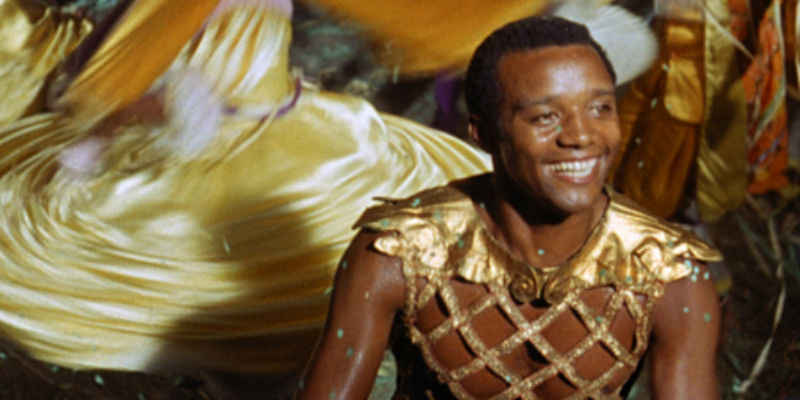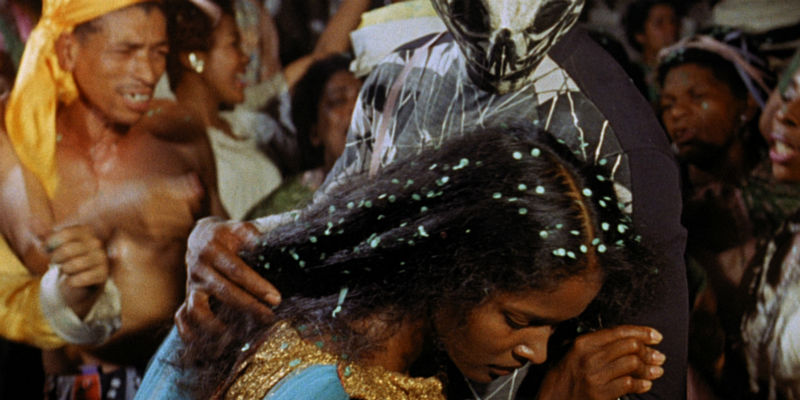It requires maturity to make a martial arts movie as deftly as Hou Hsiao-Hsien. The Taiwanese director of The Puppetmaster (1993) and Good Men, Good Women (1995) does not disappoint in his latest feature.
Nie Yinniang (Qi Shu), the 10-years old daughter of a general, is abducted by a nun who initiates her into martial arts. She transforms the young girl into an exceptional assassin, in a story that takes place during the Tang Dynasty (618-907) of Imperial China. One day, the master sends her pupil to her homeland because she failed a task. She also orders Yinniang to kill the man to whom she was betrothed. Two jade amulets (one held by Yinning and by one her fiance) symbolise their commitment.
The Assassin uses a prologue, a tradition dating back to antiquity (not just the China, but also in Greece, Rome and other ancient civilisations). This device is necessary in order to introduce some key facts before telling the story. This prologue is presented in black and white, and the Chinese characters in the opening credits resemble bloodied wounds.
The assassin in the film is a woman, who was raised and trained to kill with a sword or a dagger. Women rarely use such weapons because tradition requires that they keep a distance from their target. This is a very dirty and audacious twist.
The director said in an interview that he is always on the side of women, which is probably true. There is limited equality between men and women in modern China (with the males being widely considered superior), let alone over a millennium ago. It is easier to create a contemporary heroine such as Beatrix Kiddo in Kill Bill (Quentin Tarantino, 2003) now than at time The Assassin takes place.
Chinese Confucius described how to achieve harmony and balance wisely through philosophy. Martial arts represent another route to achieving these, as they were not created exclusively for the purpose of warmongering and self-defense. The equivalent is also found in the work of Roman poet Juvenal, who wrote: mens sana in corpore sano (“health mind in healthy body”). Yinniang’s training is also focused on wisdom, equilibrium and concentration.
The Assassin is not a celebration of violence. Quite the opposite: it is an elegy of the lost, noble values of Eastern civilisation such as patience. The long and wide shots invite you to think, to feel and to slow down your pace. Most of the sequences introduce the landscape or the house with all of their details at first, before characters appear. The viewer must conform themselves to nature and its timing.
There is harmony between the setting in Inner Mongolia and the narrative. The rupture of harmony is normally foretold by drumming. They are heard long before disruptive events – such as death or treason – take place.
Many elements from the Imperial China era are present: black magic, music, dance, ornaments as well as an effusive display of the Five Elements (water, wood, fire, metal and earth). The jade amulet is the most significant object in the movie, as it symbolises many virtues. Its rigidness signifies intelligence and justice, while its colour denotes loyalty and its transparency stands for sincerity. The assassin held such object throughout her exile. Perhaps for that reason, she displayed a very dignified behaviour upon reencountering her family.
The Assassin is about a woman who takes a long and dirty road into maturity without losing her honour and dignity. Hsiao-Hsien deservingly took the Palm D’Or for Best Director home last year, and the movie is now out in the best cinema screens in the UK and worldwide, and also available on DVD and Blu-ray.
Watch the film trailer below:
We are giving away three Blu-ray copies of The Assassin. Just e-mail us at info@dirtymovies.org and answer “what amulet did the assassin carry with her throughout her life?










